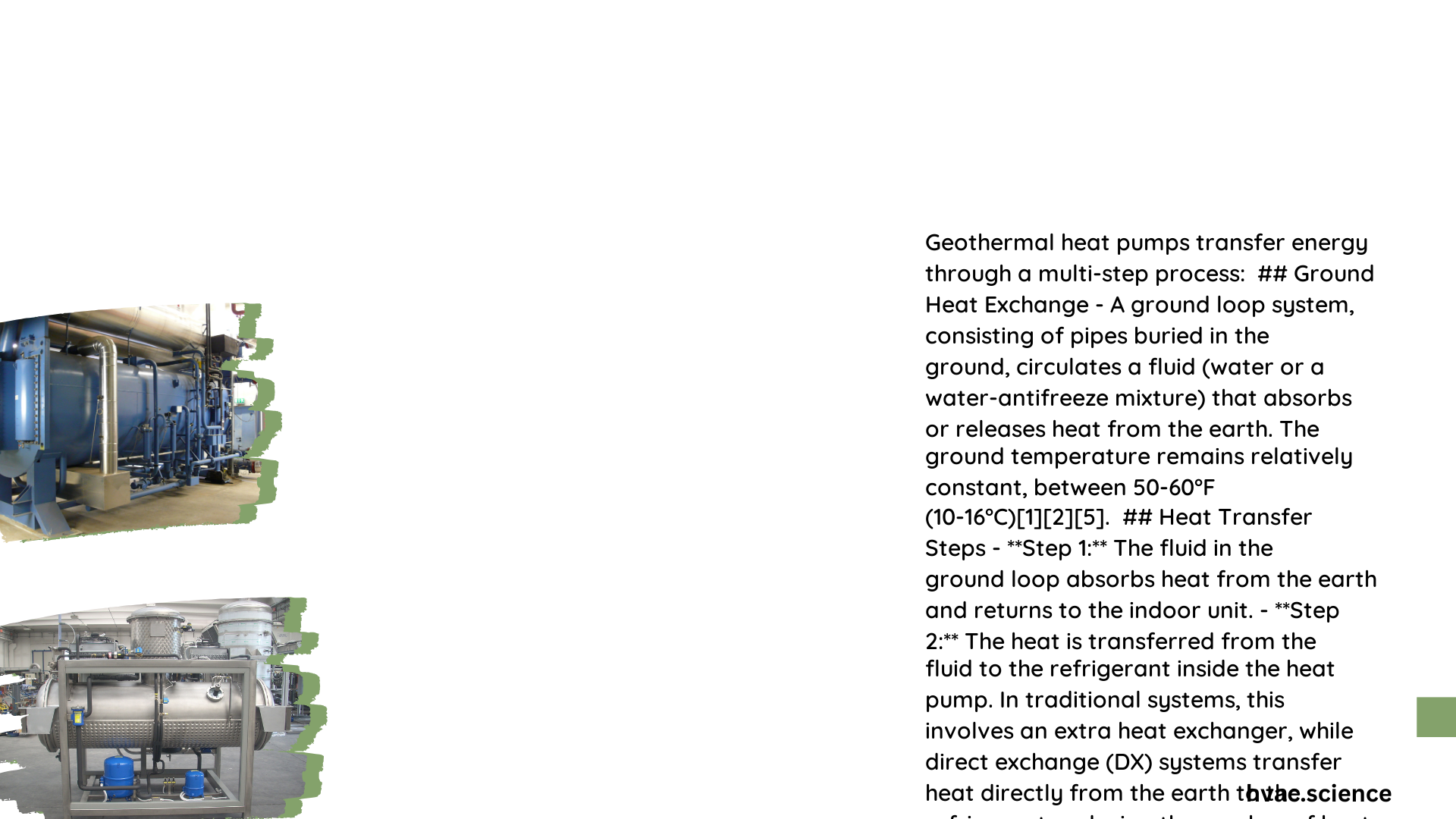Geothermal heat pump energy transfer represents a sophisticated thermal exchange mechanism that leverages Earth’s consistent underground temperatures to efficiently heat and cool buildings. By circulating specialized fluid through ground loops, these systems capture and redistribute thermal energy with remarkable precision, transforming how we conceptualize sustainable infrastructure and energy management.
What Makes Geothermal Heat Pump Energy Transfer Unique?
How Does Underground Temperature Enable Heat Exchange?
The fundamental principle of geothermal heat pump energy transfer relies on the earth’s remarkable thermal stability. Several critical factors contribute to this process:
Temperature Gradient Characteristics
- Consistent Underground Temperature: 50-60°F (10-16°C) at minimal depths
- Thermal Mass Stability: Ground maintains relatively constant temperature year-round
- Heat Absorption/Rejection Mechanism: Bidirectional energy transfer capabilities
| Temperature Zone | Winter Transfer | Summer Transfer |
|---|---|---|
| Underground | Heat Absorption | Heat Rejection |
| Building Interior | Heat Distribution | Heat Removal |
What Technical Components Drive Energy Transfer?
Ground Loop System Design
Geothermal heat pump systems utilize sophisticated ground loop configurations:
- Horizontal Loops
- Extensive land requirement
- Lower installation costs
-
Suitable for larger properties
-
Vertical Loops
- Minimal surface area needed
- Higher drilling expenses
-
Ideal for compact urban environments
-
Pond/Lake Loops
- Water-based heat exchange
- Lowest installation complexity
- Location-specific applicability
How Efficient Are Geothermal Heat Pump Transfers?
Performance Metrics
Geothermal heat pumps demonstrate exceptional energy efficiency:
- Coefficient of Performance (COP):
- Heating Mode: 3-5 units of energy per electrical unit
- Cooling Mode: 2-4 units of energy per electrical unit
- Annual Energy Savings: Up to 70% compared to traditional HVAC systems
What Challenges Impact Energy Transfer Effectiveness?
Critical Optimization Factors
Several variables influence geothermal heat pump performance:
- Soil Thermal Conductivity
- Groundwater Flow Dynamics
- Installation Precision
- Loop Configuration Selection
What Economic Considerations Exist?
Installation Cost Breakdown
- Horizontal Loop: $15-$30 per linear foot
- Vertical Loop: $15-$30 per borehole foot
- Material Expenses: $10-$20 per pipe foot
Technical Recommendations for Maximizing Transfer Efficiency
- Conduct comprehensive site geological assessment
- Select appropriate loop configuration
- Ensure high-quality pipe materials
- Implement professional installation techniques
- Regular system maintenance
Advanced Thermal Transfer Strategies
Emerging Technologies
- Enhanced Ground Loop Designs
- Nano-enhanced Heat Transfer Fluids
- Predictive Performance Modeling
Environmental Impact Considerations
Geothermal heat pump energy transfer offers significant ecological advantages:
– Reduced carbon emissions
– Minimal environmental disruption
– Renewable energy utilization
– Long-term sustainable infrastructure
Conclusion

Geothermal heat pump energy transfer represents a sophisticated, environmentally conscious approach to thermal management, combining scientific precision with sustainable technology.
